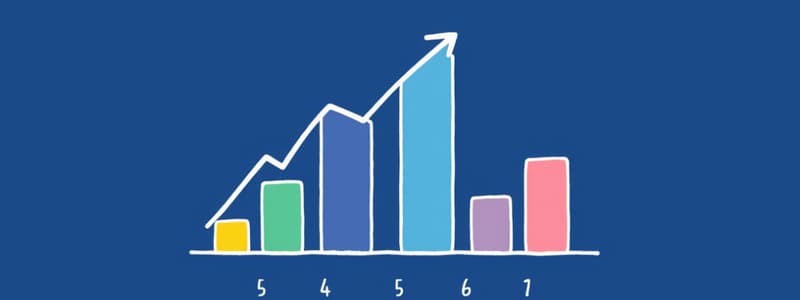Podcast
Questions and Answers
What is the primary focus of the performance standards in the mathematics curriculum?
What is the primary focus of the performance standards in the mathematics curriculum?
- General learning behaviors across subjects
- Broad descriptions of content knowledge
- Conceptual understandings about mathematics
- Specific skills that students should master (correct)
Which of the following describes a learning competency for Grade 1 students?
Which of the following describes a learning competency for Grade 1 students?
- Counts objects using ones and tens (correct)
- Solves addition problems with three digits
- Represents various types of data visually
- Recognizes fractions as parts of a whole
Which aspect is NOT emphasized in the mathematics curriculum framework?
Which aspect is NOT emphasized in the mathematics curriculum framework?
- Communication skills for articulating understanding
- Reflective learning
- Active student-centered teaching
- Standardized testing (correct)
In which area must Grade 1 learners demonstrate an understanding according to the curriculum?
In which area must Grade 1 learners demonstrate an understanding according to the curriculum?
How does the curriculum suggest prior learning impacts new learning?
How does the curriculum suggest prior learning impacts new learning?
What role do content standards play in the curriculum?
What role do content standards play in the curriculum?
What is one critical thinking skill highlighted in the curriculum framework?
What is one critical thinking skill highlighted in the curriculum framework?
Which of the following fractions should Grade 1 students demonstrate understanding of?
Which of the following fractions should Grade 1 students demonstrate understanding of?
What is an example of a content standard for Grade 1 students?
What is an example of a content standard for Grade 1 students?
Which of the following best describes a characteristic of active student-centered teaching?
Which of the following best describes a characteristic of active student-centered teaching?
Flashcards are hidden until you start studying
Study Notes
Overview of Statistics and Probability
- Focuses on collecting, organizing, analyzing, interpreting data, managing uncertainty, and predicting outcomes.
- Primary education spans Grades 1 to 3, with expected competencies by the end of Grade 3.
Numbers and Number Sense
- Covers whole numbers up to 10,000.
- Includes fundamental operations: addition, subtraction, multiplication, and division, applied to monetary contexts.
- Ordinal numbers taught up to the 100th position and basic fraction concepts introduced.
Measurement
- Includes understanding concepts of time, length, mass, and capacity.
- Focus on calculating the area of squares and rectangles.
Geometry
- Studies both two-dimensional and three-dimensional shapes.
- Includes key concepts such as lines, symmetry, and tessellation.
Patterns and Algebra
- Engages students in identifying continuous and repeating patterns.
- Introduces basic algebraic concepts through number sentences.
Statistics and Probability
- Involves data collection and representation using tables.
- Visual data presentation includes pictographs and bar graphs.
- Emphasis on understanding outcomes through practical examples.
K-12 Mathematics Curriculum Structure
- Organized into five main content areas:
- Numbers and Number Sense
- Measurement
- Geometry
- Patterns and Algebra
- Statistics and Probability
Content Areas Explained
- Numbers and Number Sense: Understanding properties, operations, and estimation of numbers.
- Measurement: Application of numerical measures to describe objects, including length, weight, capacity, and time, with a focus on perimeter and area calculations.
- Geometry: Analyzing properties of shapes, spatial reasoning, and geometric proofs.
- Patterns and Algebra: Exploration of relationships among shapes and numbers, including understanding of algebraic symbols and functions.
Grade 1 Curriculum Example
- Content Standards: Broad objectives outlining key learning areas such as understanding whole numbers up to 100, basic fractions, and monetary values up to PHP 100.
- Performance Standards: Skills students should demonstrate, such as recognizing and representing numbers in various contexts.
- Learning Competencies: Specific, logically organized learning objectives aimed at achieving content and performance standards.
Educational Principles
- The curriculum promotes critical thinking and problem-solving across all mathematics topics.
- Emphasizes reflective learning, active student engagement, and effective communication of understanding.
- Stresses the importance of making connections to prior learning to enhance comprehension.
Studying That Suits You
Use AI to generate personalized quizzes and flashcards to suit your learning preferences.




